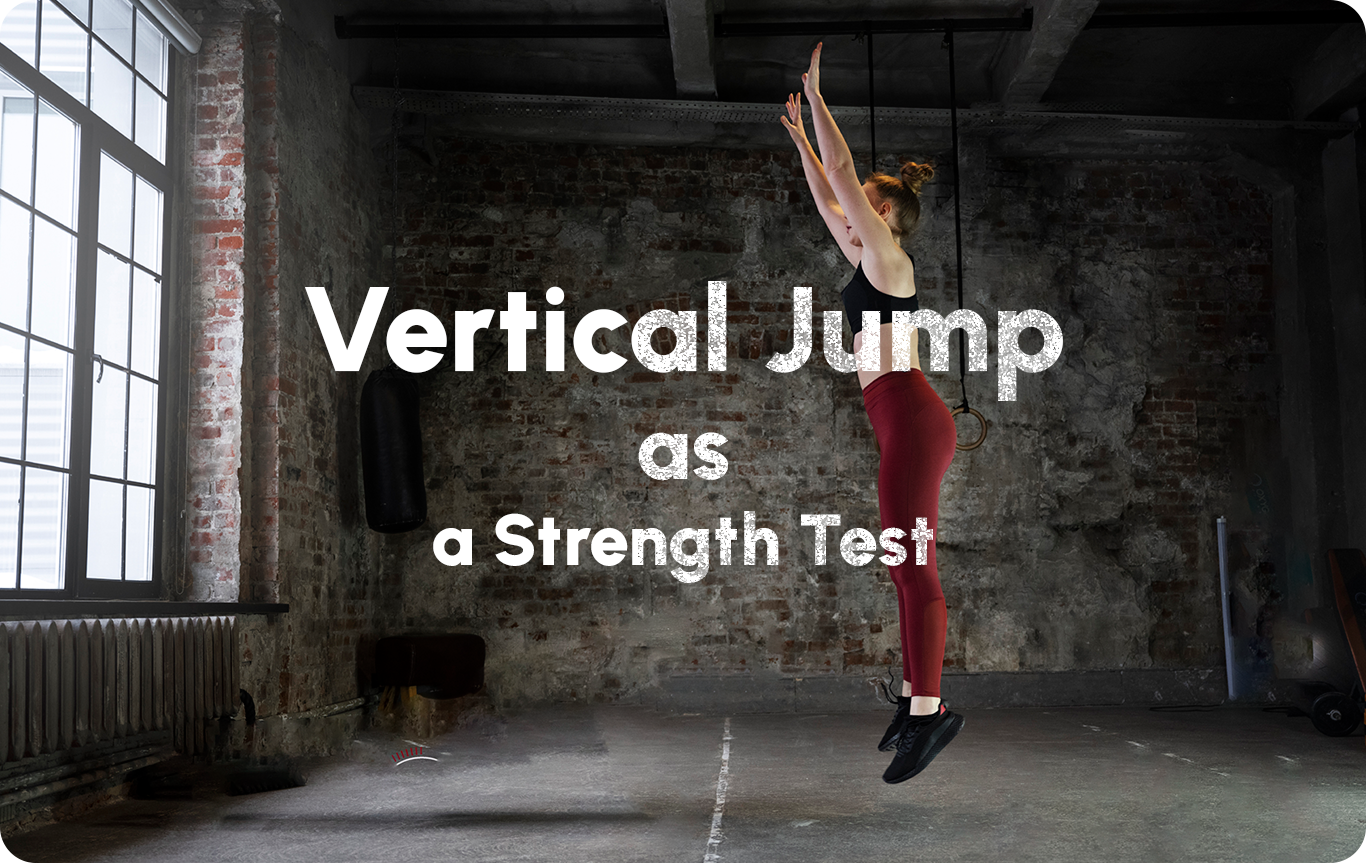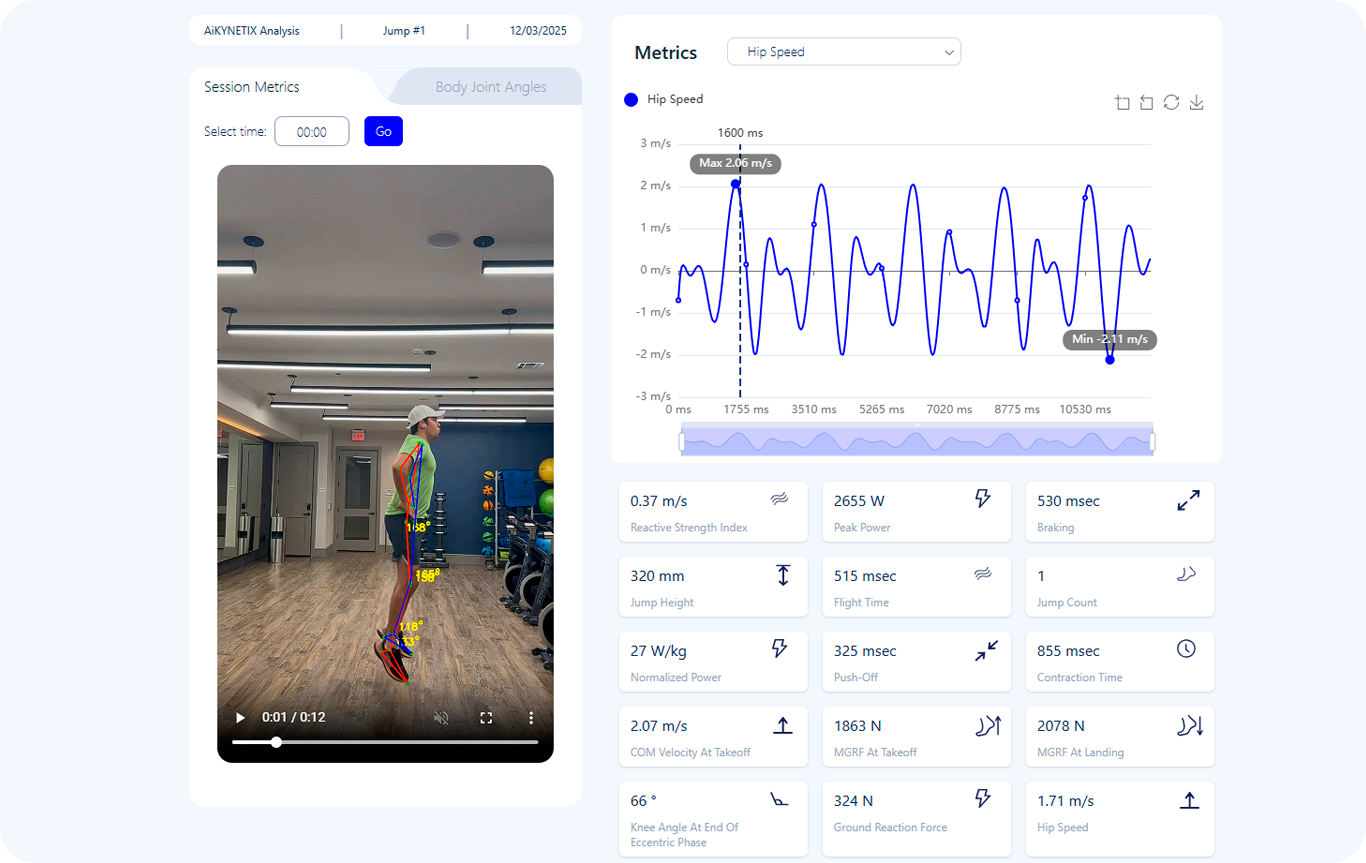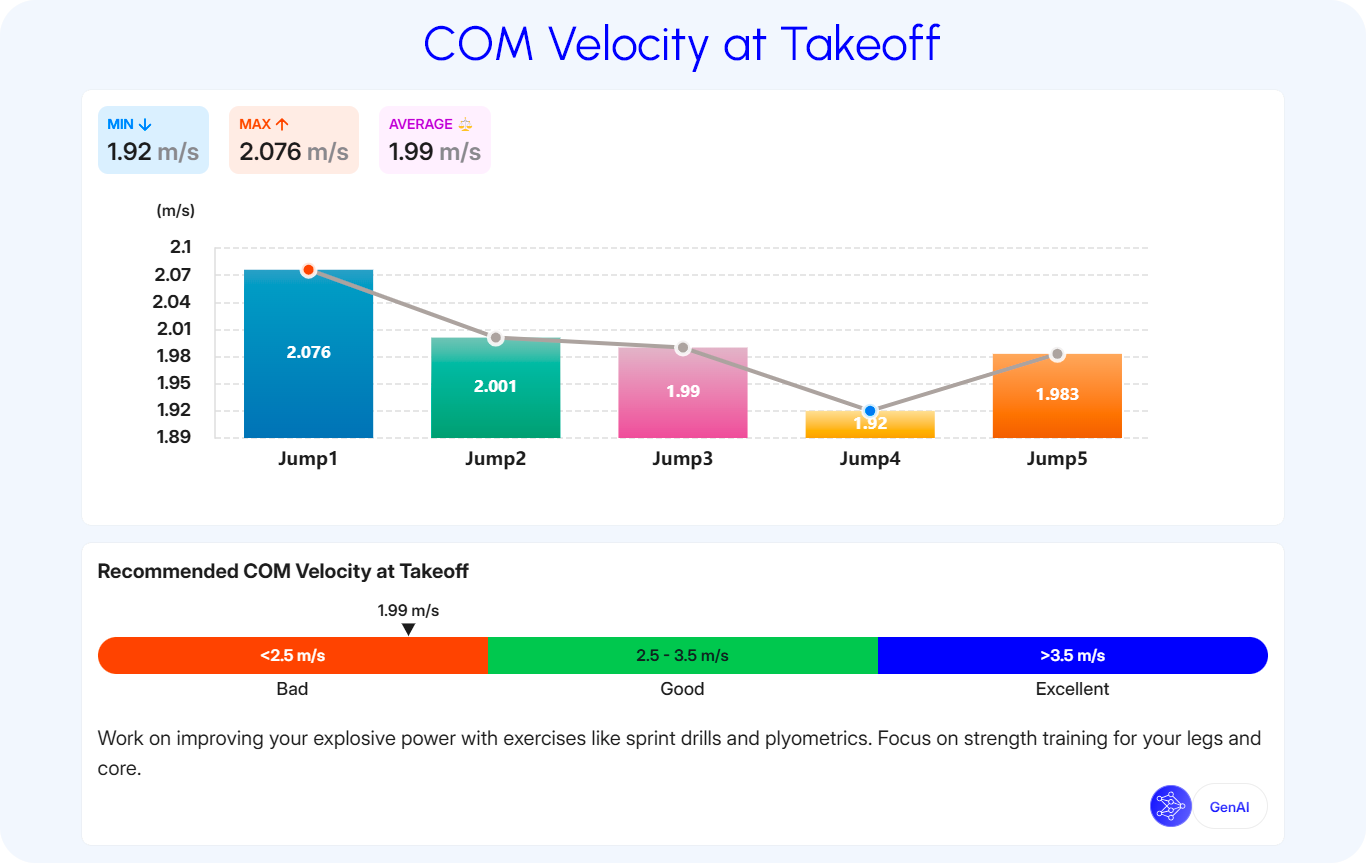For decades, the one-rep max (1RM) back squat has been the gold standard for assessing lower-body strength. But what if there was a better, more functional way to evaluate an athlete’s true power output? Enter the vertical jump—a simple yet powerful test that provides a more complete picture of strength, explosiveness, and neuromuscular efficiency.
The Science Behind the Vertical Jump
The vertical jump is a direct measure of lower-body power, reflecting an athlete’s ability to generate force rapidly. Unlike a 1RM squat, which primarily tests absolute strength, a vertical jump assesses explosive strength—how quickly an athlete can convert strength into movement. This quality is crucial for performance in sports requiring rapid bursts of power, such as sprinting, jumping, and cutting.

An athlete executing a vertical jump—one of the most effective tests for explosive strength.
What the Data Says: AiKYNETIX Vertical Jump Analysis
The AiKYNETIX Web Platform provides an in-depth breakdown of vertical jump performance, offering valuable insights that go far beyond a simple height measurement. By analyzing an athlete’s jump mechanics frame by frame, AiKYNETIX generates key performance metrics, including:
- Jump Height
- Flight Time
- Peak Power
- Ground Reaction Force (GRF)
- Reactive Strength Index
- Contraction Time
- COM Velocity at Takeoff

A detailed breakdown of vertical jump performance metrics from AiKYNETIX.
Why Vertical Jumps May Be a Better Strength Test
1. It Measures Functional Power
A 1RM squat tells us how much weight an athlete can move under controlled conditions. However, in most sports, athletes don’t lift heavy weights slowly; they generate power explosively. The vertical jump reflects an athlete’s ability to apply force rapidly, which is more relevant for athletic movements.
2. It’s Safer and More Accessible
A max squat attempt comes with an inherent risk of injury, especially if performed without proper supervision or technique. The vertical jump test, on the other hand, is low-risk and requires no additional equipment beyond a measurement tool.
3. It Provides a Holistic View of Performance
Through AiKYNETIX, athletes receive a comprehensive analysis of their jump, including factors like knee angle at the end of the eccentric phase and hip speed. This data helps athletes pinpoint weaknesses and adjust their training accordingly.

AiKYNETIX joint angle analysis reveals key movement mechanics during a jump.
Training Recommendations Based on AiKYNETIX Data
One of the most valuable features of AiKYNETIX is its AI-driven training recommendations. Based on vertical jump performance, the platform suggests personalized improvements, such as:
• Increase explosive strength: Depth jumps and reactive hurdle hops improve the Reactive Strength Index.
• Enhance takeoff mechanics: Sprint drills and plyometrics refine COM velocity at takeoff.
• Improve landing stability: Strength and balance exercises maintain safe GRF at landing.
• Enhance takeoff mechanics: Sprint drills and plyometrics refine COM velocity at takeoff.
• Improve landing stability: Strength and balance exercises maintain safe GRF at landing.

AiKYNETIX tracks performance changes over time, helping athletes monitor progress.
Conclusion: The Future of Strength Testing
The 1RM squat will always have its place in strength assessments, but for athletes looking to maximize performance, the vertical jump may offer a more complete and sport-specific evaluation. With AiKYNETIX providing precise data and AI-driven insights, athletes and coaches can take training to the next level—safely, effectively, and with measurable improvements.

AiKYNETIX allows athletes to compare different strength assessments for a well-rounded training approach.
Get Started Today!
Whether you're a coach, athlete, or rehab specialist, tools like AiKYNETIX bring cutting-edge sports science right to your phone.
💡 Start optimizing your performance now!
AiKYNETIX Web Platform - advanced features ideal for professionals.
Run, Jump, Lift - AiKYNETIX | Run AiK | Jump AiK | Lift AiK - convenient on-the-go analysis.
💡 Start optimizing your performance now!
AiKYNETIX Web Platform - advanced features ideal for professionals.
Run, Jump, Lift - AiKYNETIX | Run AiK | Jump AiK | Lift AiK - convenient on-the-go analysis.
📖 Explore More on This Topic:
1️⃣ Vertical Jumps: Performance, Fatigue & Rehab
2️⃣ Decoding the Countermovement Jump
3️⃣ Filming Running for AI Analysis
4️⃣ Filming Vertical Jumps for AI Analysis
5️⃣ Filming Weightlifting for AI Analysis
Check them out for deeper insights!
1️⃣ Vertical Jumps: Performance, Fatigue & Rehab
2️⃣ Decoding the Countermovement Jump
3️⃣ Filming Running for AI Analysis
4️⃣ Filming Vertical Jumps for AI Analysis
5️⃣ Filming Weightlifting for AI Analysis
Check them out for deeper insights!



